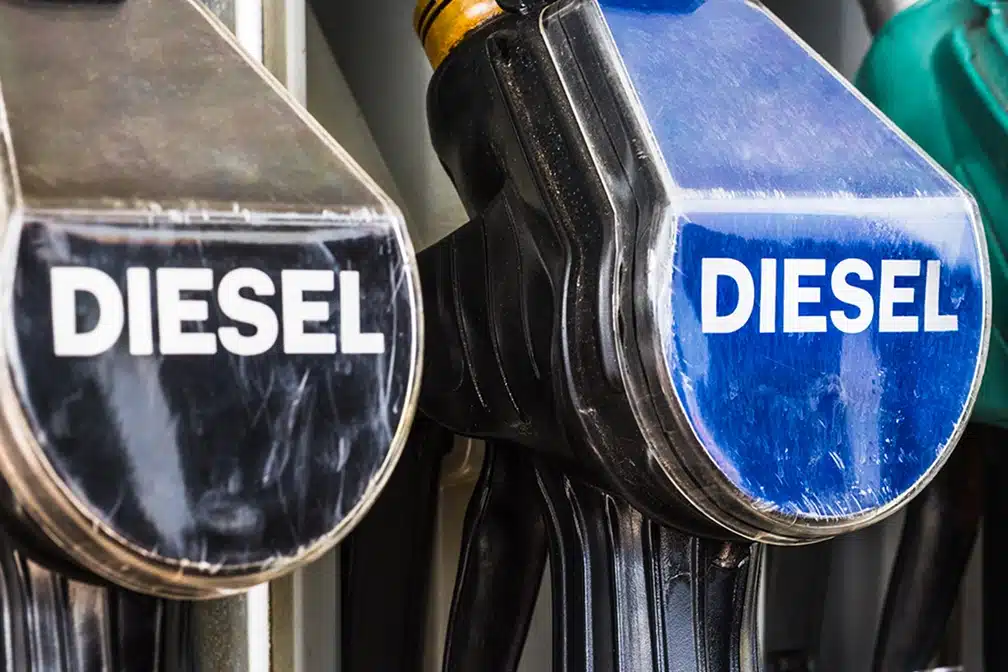Exploring the Pros and Cons of Renewable Diesel and Its Potential for Cleaner, Greener Options for the Trucking Industry.
More
May 19, 2024 8:39 pm

Truck drivers, the backbone of the American economy, are no strangers to the ups and downs of the road. But in recent weeks, they’ve been navigating a different kind of challenge—the fluctuating cost of diesel prices. As we look at the latest news on diesel prices and what it means for truck drivers, it’s essential to stay informed and adapt to changing market dynamics.
Over the past ten weeks, the national average price for a gallon of on-highway diesel fuel has been on a steady incline. For those keeping an eye on the pump, this translates to nearly a nickel increase in just one week. However, the most significant surge, nearly 17 cents, has occurred in the state of California, where truck drivers are grappling with an eye-popping $5.97 per gallon. Meanwhile, the Gulf Coast region reports the lowest average diesel prices at $4.21.
For context, diesel prices dropped to as low as $3.77 per gallon in early July, but since then, it has been an uninterrupted climb. The latest Department of Energy report, dated September 11, lists the national average at a sobering $4.54 per gallon for on-highway ultra-low-sulfur diesel.
While the current diesel prices are still nearly 50 cents per gallon lower than a year ago, there’s a growing concern about the future. If the upward trajectory continues, it could significantly impact the dynamics of the freight market, reshaping the landscape for truck drivers.
To understand where diesel prices might be headed, we turn to the U.S. Energy Information Administration (EIA), which recently published its Short-Term Energy Outlook on September 12. According to the EIA, their current projection for the average 2023 price of diesel is $4.31 per gallon. Moving into 2024, the outlook expects the average diesel prices to be $4.07 per gallon. These numbers represent a 3.5% increase compared to their previous forecast.
Avery Vise, Vice President of Trucking for FTR, addressed the audience at a recent conference, shedding light on the situation. With diesel prices on the rise and flat spot rates, small motor carriers may face the tough decision of exiting the market. Vise emphasized, “This is one of the big X factors here. If we continue to see diesel prices rise, that could be a market-changer.”
As a truck driver, you can read the trucking industry news-related articles.
Understanding the fluctuation in diesel prices goes beyond the pump. Crude oil, which makes up nearly half of the price of a gallon of diesel, plays a pivotal role in this equation. Oil futures prices have been on the rise, with U.S. oil nearing $90 per barrel in recent trading.
One significant factor behind this surge in oil prices was the announcement from Saudi Arabia and Russia to cut their oil production by a million barrels per day until the year’s end. Although these two nations are not OPEC members, they are coordinating their actions with OPEC’s oil production cuts.
According to the EIA’s Short-Term Energy Outlook, they expect the Brent crude oil price to average $93 per barrel during the fourth quarter of this year, citing an expected decline in global oil inventories in the coming months. This outlook incorporates Saudi Arabia’s September 5 announcement to continue its voluntary crude oil production cut of 1 million barrels per day through the end of this year. Previously, the voluntary cut was set to expire at the end of September.
Longer-term, the EIA said, in its forecast, “The price eases to an average of $87/barrel by the second half of 2024 because we expect global oil inventories to rise during that period.”

Don’t Miss:
Truck drivers have always been known for their resourcefulness and adaptability, and when it comes to managing the impact of fluctuating diesel prices, there are several effective strategies you can employ:
Regular Maintenance: Keeping your truck in top condition is essential for fuel efficiency. Regularly service your vehicle to ensure that the engine is running smoothly, and all components are well-maintained.
Reduce Idling: Minimize idling time by turning off the engine when it’s not necessary. Modern trucks are equipped with idle-reduction technologies, but it’s still essential to practice fuel-conscious habits.
Smart Driving Techniques: Implement fuel-efficient driving techniques, such as gentle acceleration and braking. Avoid aggressive driving, which can significantly increase diesel prices.
GPS and Apps: Leverage GPS devices and route planning apps to find the most fuel-efficient path. These tools can help you avoid traffic congestion, road closures, and detours that waste fuel.
Plan Stops Wisely: When planning your stops, consider the availability of fuel stations along your route. Knowing where you can refuel at the most cost-effective locations can help you save money.
Balanced Cargo: Ensure that your cargo is evenly distributed and within the legal weight limits. Overloading your truck not only affects safety but also reduces fuel efficiency.
Load Planning: Work closely with shippers and receivers to optimize your loads. Reducing the number of empty miles and deadhead trips can lead to significant fuel savings.
Fuel Price Apps: Various mobile apps and websites provide real-time diesel price updates and predictions. Use these tools to plan your refueling stops strategically.
News and Reports: Keep an eye on industry news and reports regarding diesel prices and oil market trends. Being aware of potential price increases or decreases can help you time your fuel purchases more effectively.
Review Budgets Regularly: Regularly review your budget to ensure it reflects current diesel prices. Be prepared to adjust your budget as needed to accommodate rising fuel costs.
Emergency Fund: Consider setting aside an emergency fund for unexpected diesel price spikes. Having a financial cushion can provide peace of mind during challenging times.
Truck Stops: Many truck stops offer fuel discounts and loyalty programs for frequent customers. Take advantage of these opportunities to reduce your fuel expenses.
Fuel Providers: Explore partnerships with fuel providers that offer discounts to trucking companies. Building relationships with suppliers can lead to long-term cost savings
In conclusion, fluctuating diesel prices may present challenges for truck drivers, but they are not insurmountable. By implementing these strategies and staying proactive in managing your fuel expenses, you can continue to operate efficiently and profitably in this dynamic industry. Remember that adaptability is one of your greatest strengths, and with careful planning, you can steer through these turbulent waters and maintain a successful journey on the open road.
For more information and articles from the trucking industry, follow us on Facebook or subscribe to our Truck Driver News newsletter.
Exploring the Pros and Cons of Renewable Diesel and Its Potential for Cleaner, Greener Options for the Trucking Industry.
MoreLeaders of various sectors in the trucking world can’t make up their minds about the supposed truck driver shortage. Here we discuss arguments for and against.
MoreAging and Labor Laws Threaten Owner Operators Challenges Facing Owner Operators: Navigating Labor Laws and the Aging Workforce Owner operators are individuals who are self-employed and manage
MoreIn December 2023, Florida asked for a change in the CDL testing process. After consideration and a request for public
MoreWayne Hayes, a seasoned professional driver with AutoZone, stands proudly as the distinguished recipient of the 2023 International Driver Excellence
MoreCDL Downgrade Warning: starting November 18, 2024, State Driver’s Licensing Agencies will revoke CDLs for drivers with unresolved violations. Act
MoreAt the SuperRigs event, Davis's rig made quite an impression, sweeping awards in three categories: the Tractor-Trailer Division, Best Chrome,
MoreClass 8 trucks and trailers are an essential part of the transportation industry, hauling goods and products across the country.
More